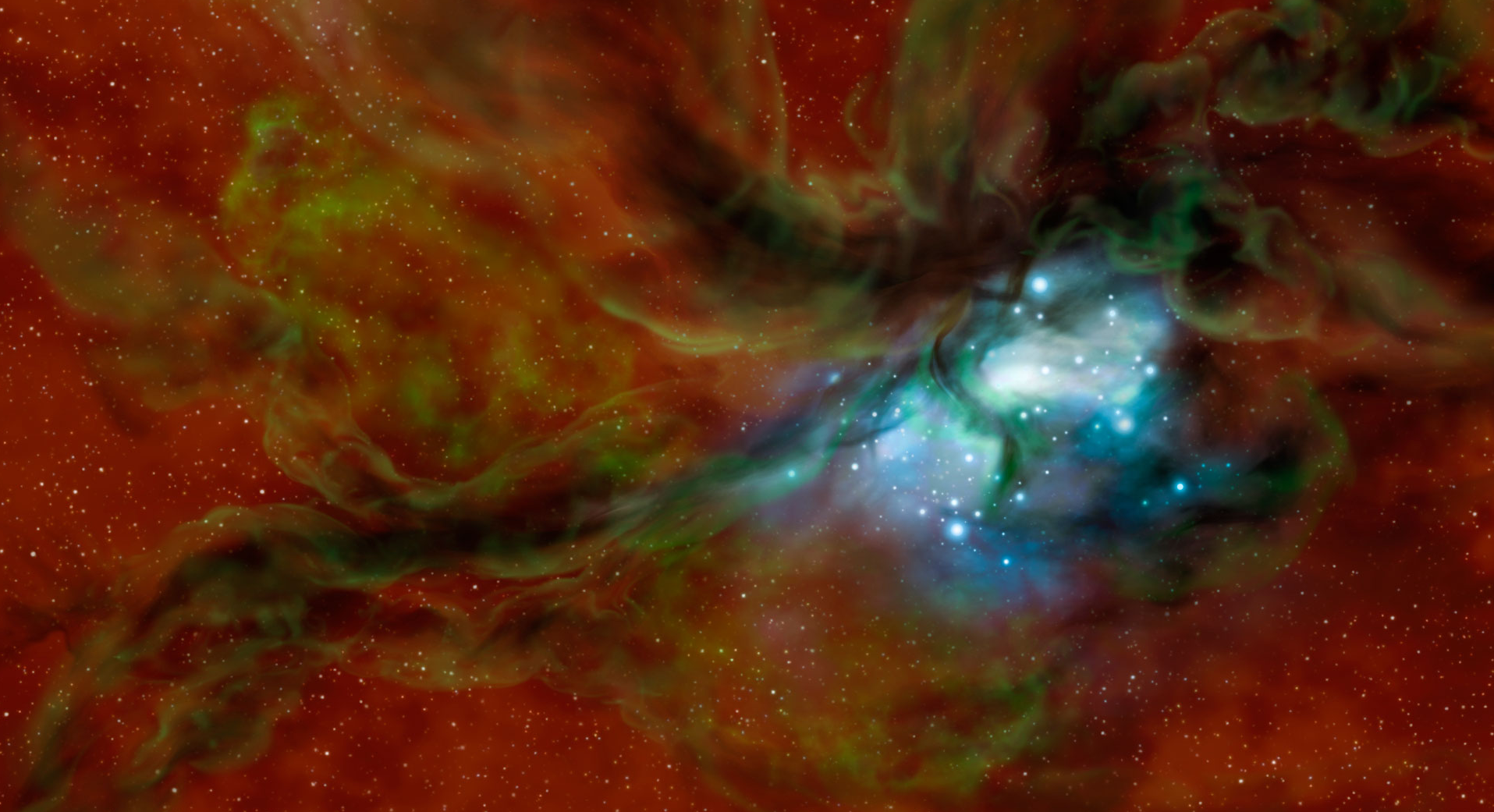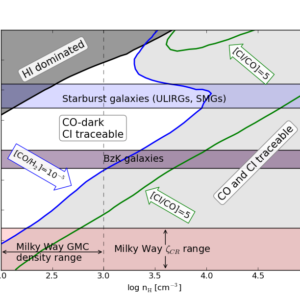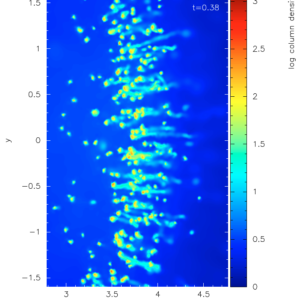
The dominant process for the galactic star formation is believed to be the collision between giant molecular clouds. The collision triggers the gravitational collapse of the merged clouds, creating star clusters. Identifying these collisions is a complicated task, involving a particular pattern in the position-velocity diagrams, the so-called “bridge-effect”. So far the community has focused on searching for this signature in molecular lines i.e. in low-J CO lines.
State-of-the-art astrochemical simulations have shown that apart from molecular lines, atomic and ionic lines (known as “fine-structure lines”) can also be used as diagnostics, particularly in the case when the collision is already evolved and the signature in molecular lines has been diminished. This is because fine-structure lines are predominantly emitted from the outer envelope of the clouds, thus carrying the bridge-effect signature longer than molecular lines do (the latter emitted from the innermost parts of the cloud).
Our team has analysed [CII] 158μm observations of the Infrared Dark Cloud G035.39-00.33 taken with the Stratospheric Observatory for Infrared Astronomy (SOFIA). These observations strongly support the case that G035.39-00.33 may currently undergo collision. Using 3D-PDR and density distributions from magnetohydrodynamical simulations, I have identified the “signatures” that fine-strucutre lines, such as the [CII] 158μm, need to have in their velocity spectrum to support binary cloud collision. With this, we have shown that the aforementioned cloud is likely to be a massive star formation site albeit at its very early stages. Our observations and analysis are the first ones suggesting that fine-structure lines can be used as diagnostic for cloud-cloud collision activity.
![Read more about the article Origin of the [CII]-deficit](https://thomasbisbas.com/wp-content/uploads/2023/01/deficit-300x300.png)

